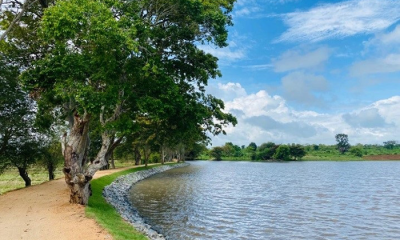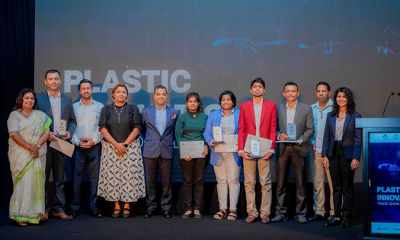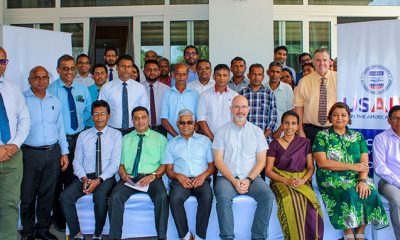Opinion
Climate Change for Us

Animal and climate justice groups pointed out that almost 60 per cent of the menu at the Conference was made up of high-carbon, meat and dairy products.
By DEVENDRA SAKSENA
The UN Climate Change Conference (COP26) in Glasgow, concluded on 13 November 2021. The Conference was attended by 197 countries, represented by 120 Presidents/Prime Ministers. More than 40,000 private participants, 14,000 observers and about 4,000 media representatives, also attended the conference. All facets of climate change, the science, the solutions, the finances were discussed threadbare. After two weeks of pontification, most countries agreed to achieve climate control targets by 2050, while India proposed to do so by 2070.
Consensus emerged to hold the increase in the global average temperature to well below 2°C above preindustrial levels, preferably, to limit the increase to 1.5°C. Significantly, no timelines were prescribed. On the downside, participants noted that limiting global warming to 1.5°C required rapid, deep and sustained reductions in global greenhouse gas emissions, but according to current predictions, aggregate greenhouse gas emission levels were projected to be 13.7 per cent above the 2010 level in 2030.
Also, not a single penny of the US$100 billion contribution from developed countries, required to help poorer countries make a transition to clean energy and develop climate resilient infrastructure, has materialised. In conclusion, all participants were long on rhetoric but short on commitment. Secondly, everyone looked to set goals far in the future when none of the attendees could be held responsible for their misleading promises. Thirdly, richer countries were unwilling to commit funds for climate control.
Fourthly, COP26 focussed on reducing dependence on fossil fuels but the main sponsors of the Conference, like that of the last Conference, were fossil fuel and finance companies! Climate activists expressed concern about the inclusion of large delegations of industries, particularly big polluting companies, and financial organizations in the conference. Animal and climate justice groups pointed out that almost 60 per cent of the menu at the Conference was made up of high-carbon, meat and dairy products.
Also, business leaders like Jeff Bezos, and politicians like President Biden, Prince Charles, PM Boris Johnson, and Chancellor Angela Merkel travelled to Glasgow in private jets, belying their promise of reducing carbon emissions. Moreover, no delegate saw climate change from the viewpoint of an affected party; Most Affected People and Areas (MAPA), a term describing groups and territories disproportionately affected by climate change, went almost unrepresented at COP26. What happened outside the conference hall was equally noteworthy.
Protests were organised by climate-change activists who wanted more immediate and farreaching action on environmental preservation. Almost 100,000 people joined in a protest march in Glasgow. According to the Times, around 2 million people around the world protested on 6 November 2021, the Global Day of Action for Climate Justice. Leaders of countries with the worst pollution records, Xi Jinping of China, Vladimir Putin of Russia and Jair Bolsonaro, of Amazon de-forestation infamy, skipped the conference.
Queen Elizabeth II, too, was sceptical; in a private conversation she said: “It’s really irritating when they talk, but they don’t do.” Leaked documents accessed by the BBC, prior to COP26, revealed massive lobbying to influence the outcome of COP26: wealthy nations like Switzerland and Australia questioned payments to poorer states to enable them to adopt greener technologies. Saudi Arabia, Japan and Australia were among countries that asked the UN to moderate its stance on the need to move away from fossil fuels.
Like-Minded Developing Countries (LMDC), a group of 22 countries, including major emitters China, India and Saudi Arabia, asked for the commitment to climate mitigation to be entirely removed from the draft text. Thus, the prognosis is not very encouraging. Climate Action Tracker, a research group monitoring government action for reducing greenhouse gas emissions, concluded that with current policies, global temperature may rise by 2.7°C by the end of the century.
The temperature rise will be limited to 2.4°C, if the pledges for 2030 are implemented, and by 2.1°C if the long-term targets are also implemented. Global warming would be limited to 1.8°C, only if all targets were implemented in their entirety. Probably, as a warning signal, this year had more than its share of extreme weather events. Unusually early heat waves, that brought terrifying wildfires and powerful floods in their wake, were noticed globally. India, Pakistan, China, Europe, Australia, North and South America, all suffered badly.
Heat waves hit the Indian sub-continent in March 2022, right after winter receded. There was no spring season; temperatures crossed 45°C at many places in India, with Nawabshah in Pakistan recording a high of 49.5°C. Breaking all records, Lytton in British Columbia, Canada recorded a temperature of 49.6°C. Similar temperatures were recorded in Mid-Western and South-Eastern USA. Many places in Britain and France recorded temperatures exceeding 40°C.
After early floods, China is facing an unprecedented heatwave and drought, with temperatures at some places exceeding 50°C. Contrarily, after the early heatwave, Pakistan experienced prolonged, torrential rains, described as ‘monsoon on steroids’ by the UN Secretary-General, and the worst floods in its history. The Southern Hemisphere experienced similar heatwaves with Australia, Argentina, Uruguay, Paraguay and certain parts of Brazil, recording extreme temperatures in January 2022. Freak hailstorms have battered Germany and Mexico City, and a severe hurricane season has been forecast for the US. Meteorologists see these events as part of a troubling trend, with one problematic weather condition influencing another, probably as an impact of climate change. The climate apocalypse predicted after half a century, seems to have hastened its arrival.
COP27 is scheduled for November 2022, but there is little hope that the outcome of COP27 would be much different from that of COP26, about which climate activist Greta Thunberg had said: “Nothing has changed from previous years really. The leaders will say ‘we’ll do this and we’ll do this, and we will put our forces together and achieve this’, and then they will do nothing. Maybe some symbolic things and creative accounting and things that don’t really have a big impact.
We can have as many COPs as we want, but nothing real will come out of it.” There are two alternatives before India: either go with the mainstream and make hollow promises with no intention of fulfilling them or try and repair the climate over our own country. Insulation from the Asian landmass, by oceans in the south and the Himalayas in the north, protects us ~ though not totally ~ from depredations of our neighbours. An honest effort to limit pollution and overexploitation of natural resources ~ the major causes of climate change ~ at the national level could yield rich dividends, sooner rather than later.
Fortunately for us, environment protection laws are in place, and it should only be a question of proper implementation. But, unfortunately, the wind is blowing in the opposite direction. A sham progress vs. environment debate has been created; the public is encouraged to put environmental concerns on the backburner. The current, unstated Government policy is of not discouraging environmental transgressions, so much so that if an environmental rule or law stands in the way of Ease of Doing Business, the law is often changed.
Examples are numerous: Environment (Protection) Act, 1986; Forest (Conservation) Act, 1980; Wildlife Protection Act, 1972; Water (Prevention and Control of Pollution) Act, 1974; Air (Prevention and Control of Pollution) Act, 1981 and Indian Forest Act, 1927, were amended, as also the Environment Impact Notification and the Coastal Regulation Zone Notification. Moreover, aping the West, a culture of consumerism that encourages mindless exploitation of natural resources is being promoted. Far corners of the country are being opened up by building highways, even in the hills, which have triggered landslides and exposed simple folk to extraneous influences.
Then, plans are afoot to introduce alien commercial plant species in the virgin jungles of the Andamans and the North-East. Stephen Hawking, the eminent physicist and author had warned: “One can see from space how the human race has changed the Earth. Nearly all of the available land has been cleared of forest and is now used for agriculture or urban development. The polar ice caps are shrinking and the desert areas are increasing. At night, the Earth is no longer dark, but large areas are lit up.
All of this is evidence that human exploitation of the planet is reaching a critical limit. But human demands and expectations are ever-increasing. We cannot continue to pollute the atmosphere, poison the ocean and exhaust the land. There isn’t any more available.” We can only hope that our leaders wake up in time to save the earth from a climate catastrophe.
(The Statesman/ANN)
Opinion
Drs. Navaratnam’s consultation fee three rupees NOT Rs. 300

Thank you for publishing the article written by Mr Arjuna Hulugalle on my British Empire Medal award. I appreciate the prominence you have given the accolade, but I just wanted to bring to your notice that there was an incorrect reference to charges for patient consultations made by my late parents Dr and Dr Mrs Navaratnam.
I believe it was a type written error and it should read “to every patient the consultation fee was rupees three (NOT Rs 300.00” as stated in the article). My parents did not believe in taking money from their patients as theirs was a service to humanity, but if they did charge patients it was a nominal fee of three rupees or more often than not free of charge.
I hope you will publish this correction on my behalf as my late parents left a tremendous legacy of humanity, kindness and compassion and this does not reflect what they stood for.
Preshanthi Navaratnam
Opinion
81st Birth Anniversary of Dr. (Mrs.) Dulcie de Silva – A tribute

“In the end, it is not the years in your life that count. It is the life in your years.” — a quote from Abraham Lincoln that offers me a unique perspective to reflect on the life and work of Dr Mrs. Dulcie de Silva, whose 81st birthday falls on May 12, 2025. She is fondly addressed as Dulcie. Her life so far has been full of loving relationships, intellectual curiosity, a strong commitment to helping others, and an interesting career in public health with a focus on training primary healthcare workers. These qualities have made her one of Sri Lanka’s most memorable public health figures in recent times.
Dr de Silva’s move to the Institute of Hygiene Kalutara (now the National Institute of Health Sciences – NIHS) in 1976 as a Medical Officer was a defining moment in her life. That was when she truly embraced public health as her lifelong path. Later, she became part of the faculty, training primary healthcare workers, and stood out as one of its pioneers. She had the good fortune to be mentored by the late Dr Godwin Fernando, who took on the role of Chief Medical Officer of Health Kalutara in 1972. She also worked alongside a passionate group of co-workers from various health fields.
In the early 1970s, public health started going through a major transformation, especially in how front-line health workers were trained. This shift really kicked off when Dr Godwin Fernando became Chief Medical Officer of Health.
The transformation was not easy. It was a tough journey driven by Dr Fernando’s strategies, in partnership with his team — with Dr de Silva playing a key role. There was careful planning and structured roll-outs aimed at addressing the country’s health training needs more effectively. Getting approval from the ministry and cabinet was a major hurdle. Dr Fernando and his team had to navigate uncertainty and challenges to get NIHS recognized as a decentralized unit of the Ministry of Health. He had the willpower and skills to face whatever came his way. “Si vis pacem, para bellum” (If you want peace, prepare for war). Dr Fernando had a rare ability to anticipate the future. He was incredibly resilient — able to adapt, recover, and continue. With these strengths, he led an effort to persuade, negotiate, defend, and compromise in the interest of what became a nationally recognized achievement.
This entire journey gave Dr de Silva the experience to equip herself with future-ready skills and long-term success. She believed that “a vision is not enough; it must be combined with venture. It is not enough to stare up the steps; one must also step upstairs.” She believed bringing new life to your life requires focus, dedication, and emotional energy. She was driven by purpose and eventually became the fifth Director of NIHS in 1997 serving until her retirement in 2004.
The golden years of NIHS began with its full autonomy as a decentralized body under the Ministry of Health. This stage involved major developments in human resources, infrastructure and curriculum redesign, to mention but a few.
From the early 1980s, NIHS took new steps in its training programs. A notable example was the community development project in Adikarigoda, a small village near Kalutara, which became a “community school” offering direct training and research opportunities. Dr Halfdan T. Mahler, then Director-General of the World Health Organization, visited both NIHS and this village in the mid-1980s. He was deeply moved by the sense of unity and spirit there. In appreciation, Dr Mahler made a personal donation to restart a preschool project that had stalled for years. Dr Mahler is known for launching the “Health for All by the Year 2000” strategy.
Dr de Silva had a talent for managing problems. She was a moral compass who made steady, thoughtful decisions. Her leadership style was marked by calm strength, confidence, and consistency. She was known for doing ordinary things in extraordinary ways and following the principle: “Never impose on others what you would not choose for yourself.”
She was an erudite person with immense potential and experience in teaching and learning — providing a dynamic environment that nurtured intellectual curiosity, critical thinking, and ethical leadership. She believed in lifelong learning. “Ancora imparo” (Still, I am learning) — the Italian quote fits her perfectly.
Dr de Silva’s family and social life were filled with joyful moments and admirable qualities. She was always kind-hearted, cheerful, and modest — someone who lived with grace and grit. I remember the birthday parties of our sons and daughters back in the 1970s when we lived in the NIHS quarters. Today, you have your elder sons, daughter, grandchildren, and Mr. Andrew de Silva — once Secretary of Education close to you in your senior years.
You now lead a virtuous family life deeply rooted in religious and spiritual pursuits. “A virtuous wife was one who led the good life. A good laywoman endowed with religious devotion, moral virtues, and openness as well as wisdom and learning and gifting to charity makes success of her life in this very existence.” (Samyutta Nikaya)
Dr de Silva returned to public life though in a limited way after ten years of retirement, as a co-founder of the NIHS Pensioners’ Association, formed in December 2014. She served as its president for nine consecutive years. The association’s mission is to support the health, social, and spiritual needs of its members, while also showing continued loyalty to NIHS. One of its major achievements was naming the NIHS Auditorium as “Dr Godwin Fernando Memorial Auditorium” — a lasting tribute to a public health pioneer. The association celebrated its 10th anniversary in December 2024, marking a significant milestone.
On aging, Dr de Silva believes that with the right attitude and healthy spirit, aging can bring joy and new rewards. She feels positive aging is about being confident, staying active, and living fully.
She has answered some of life’s deepest questions: How should I live my life? For what should I aim? What values should I live by? These are what some call “Socrates questions.”
Dr de Silva has lived a psychologically rich life — never boring, always full of new experiences. She is a rare blend of qualities in one person. She lived authentically and gracefully and is undoubtedly a true legend of our time. Her contributions to public health are clear and lasting.
As she continues her retirement journey, I wish her good health and much joy in the years ahead.
The wonderful memories we share are priceless.
A.K. Seneviratne
A Former Senior Tutor, Public Health
NIHS Kalutara
Opinion
Ratmalana: An international airport without modern navigational and landing aids
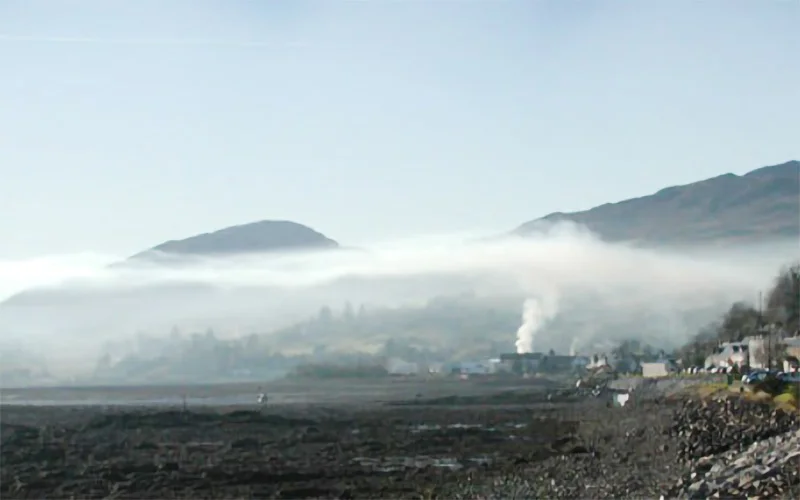
History
In 1934 the State Council of Ceylon decided that an airport with easy access to Colombo was a necessity and declared that Ratmalana was the best site available. Accordingly, an airfield was built, and the first landing took place on 27 November 1935 at what became Ceylon’s first dedicated aircraft landing ground. During World War II the airport expanded, and a ‘hard’ runway was built.
To assist aircraft landing in bad weather and resulting bad visibility, a transmitter was built at Talangama to generate a radio signal beam, called a ‘radio range’, directed along the extended centreline of the Ratmalana runway. If the aircraft was tracking along the correct path, pilots would hear a continuous tone in their headsets. However, if they were left of the desired track, they would hear the letter ‘A’ transmitted in Morse Code (‘dit-dah’); or if right of the beam, the Morse letter ‘N’ (‘dah-dit’). The objective was to hear a continuous signal guiding them toward Ratmalana along the extended centreline of the runway.
Later, a low-frequency Non-Directional Radio Beacon (NDB) transmitter was installed at Attidiya in the vicinity of the airport, and used in conjunction with an Automatic Direction Finder (ADF) onboard the aircraft. A needle on a compass dial in the aircraft pointed to Attidiya, giving directional guidance. Although this system was useful, when most needed, for example during thunderstorm activity, there was static interference and the needles pointed toward the storm instead of at Attidiya. So, a Very High Frequency Omni Directional Radio Range (VOR) was installed for more accuracy and reliability.
After WW2 Ratmalana Airport was served by a few international airlines such as Air Ceylon, Indian Airlines, BOAC (British Overseas Airways Corporation) and TWA (Trans World Airlines). But in 1968 the airport lost its ‘international’ status when Bandaranaike International Airport opened and all international operations moved to Katunayake. Subsequently, the equipment at Ratmalana was allowed to deteriorate; radio navigational let-down aids were no longer operative, and there was no proper control tower. The civil training aircraft of the government’s flying school had neither radios nor radio aids to navigation.
Even the runway lights didn’t work, and domestic flights had to depend on kerosene lamps to demarcate the runway limits. Flares from oil lamps were the guiding light for all traffic landing at Ratmalana Airport. One redeeming grace, in the night, in those days, was that the Sapugaskanda Oil Refinery was in full production and a giant flare of the burning gasses was the guiding light to all domestic traffic landing at the Ratmalana Airport. The Pilots spotted the flare from far away and flew over the Refinery and then turned on the runway heading and could see the runway edge kerosene flares, flickering dimly in a dark patch that was the Ratmalana airport!
Post-1977 and the Dharmista government, another problem was created for Ratmalana operations. Sri Lanka’s capital was moved to Sri Jayewardenepura, Kotte, and a new Parliament complex built there. Unfortunately, the parliamentary precinct was only 3.6 nautical miles (NM) from the end of the Ratmalana runway ‘as the crow flies’, and less than 1 NM from the Talangama transmitters. In most countries overflying the Parliament is prohibited, and Sri Lanka decreed it wouldn’t be an exception to the rule.
This decision was detrimental to freedom of aircraft movements to the Ratmalana runway, preventing longer, safer, conventional landing approaches. At the time Air Ceylon, the Sri Lanka Air Force (SLAF) and other domestic flights were still using Ratmalana airport. Many professionals observed that it was akin to someone building a house near an existing railway line and then complaining that it was too noisy and requiring the railway to divert. This is not unlike the widely-known ‘NIMBY’ phenomenon: Not In My Back Yard.
Consequently, aviators had to accept the non-availability of precision navigational aids at Ratmalana as the Talangama transmitters lost their significance. The Urban Development Authority (UDA) eventually took vacant possession of the Talangama precinct, and the Sri Lanka Army’s Gemunu Watch infantry regiment established a camp there.
During December’s clear nights and cooler mornings, temperature inversions combined with the northeasterly winds blowing smoke from the Sapugaskanda Oil Refinery seriously compromise visibility on the final approach to Ratmalana airport. (See image 1)
On the morning of 14 December 2014, a SLAF Antonov An-32 transport aircraft on a ferry flight from Katunayake attempted to approach for landing at Ratmalana airport and crashed. This prompted the then Air Force Commander to write to the then Director General of Civil Aviation (DGCA) to reinstall navigational facilities (see letter below). Now, after almost 11 years, Airport and Aviation Sri Lanka (AASL) is slowly realising that not only the ‘seen’ but also ‘unseen’ facilities at Ratmalana should be brought up to international standard in the name of air safety. Wide publicity was given to the fact that the government’s intention was to make Ratmalana an international business aircraft hub by way of regaining its past importance. In fact, it is now known as the Colombo International Airport Ratmalana (CIAR). (See image 2)

Image 2
Meanwhile, another security-sensitive building has been erected and commissioned on vacant land at the former site of the Talangama transmitters, barely 1 NM from the Parliament and 4.4 NM from the Ratmalana runway end. That is the Akuregoda Military Head Quarters, which has created an effective manmade barrier to limit operation of legitimate air traffic to Ratmalana, consequently imposing more restrictions on inbound operations. Furthermore, it appears that there was no ‘master plan’ for Ratmalana International Airport, in a case of the left hand not knowing what the right hand was doing. (See image 3)

Air safety dictates that jet aircraft should have at least an 8 mile straight-in (no turns) final approach. Now it is not possible to do that with the unplanned presence of sensitive buildings on the final approach to Ratmalana. Ideally, as in other countries, all three parties – the local municipality town planner; Civil Aviation Authority/ Airport and Aviation Ltd (CAASL/ AASL); and building developer – must make these long-term decisions. In Australia, for instance, the Civil Aviation Safety Authority and relevant airports authorities have control of manmade obstacles for a radius of 25 miles. In Sri Lanka, unplanned buildings, called ‘man-made relief’ as against ‘geographic relief’ (terrain), have compromised feasibility of the intended city airport.
Another example is the General Sir John Kotelawala Defence University (KDU), the tallest building in the vicinity of Ratmalana Airport that should never have been allowed to be built that high. This is symptomatic of a malady the entire country is suffering from: people in the know are afraid to speak up. Subsequently, no one is held accountable for these poor, uncoordinated decisions without true professionals being consulted, resulting in tunnel vision. As a pithy Sinhala saying goes, “ledaa malath, bada suddai” (‘although the patient died, the bowels were clean’).
Accommodating ‘business jets’ (‘bizjets’, or executive jets) at Ratmalana Airport will be a good source of revenue, and a step in the right direction. Putting aside criticism of how Ratmalana Airport was allowed to run down, I write to offer a practical solution to mitigate the adverse effects of unplanned buildings. While the Akuregoda military base is working around the clock, the overflying prohibition may be justified. But Parliament sits only on certain days and for limited hours.
Therefore, the authorities should provisionally allow air traffic, inbound to Ratmalana, to overfly the Parliament complex on days and times when there are no sittings. A Notice to Airmen (NOTAM) to that effect could be issued as and when necessary.
The over-flight of the Parliament would become ‘Restricted Airspace’, not ‘Prohibited Airspace’. With airspace thus shared for the benefit of all users, longer and therefore safer approaches could be designed to facilitate those small but fast bizjets from overseas operating in and out of Ratmalana Airport.
The differences in airspace regulation and restrictions are as published by the International Civil Aviation Organisation (ICAO).
Restricted Area/Airspace is defined as an area of airspace where flight is permitted only under certain conditions. These conditions may include obtaining permission from the airspace’s controlling authority, flying at a certain altitude, or following a specific route. Restricted airspace is typically used for military training, testing, or other activities that require special precautions.
A restricted area is an airspace of defined dimensions above the land areas or territorial waters of a state, within which the flight of aircraft is restricted in accordance with specific conditions. (ICAO Annex 2: Rules of the Air)
Prohibited Area/Airspace is an area of airspace where flight is completely prohibited. This type of airspace is typically established for national security reasons, such as protecting sensitive government facilities or military bases. In some cases, prohibited airspace may also be established for safety reasons, such as around airports or other areas with high levels of air traffic.
A prohibited area is an airspace of defined dimensions, above the land area or territorial waters of a state, within which the flight of aircraft is prohibited. (ICAO Annex 2: Rules of the Air)
Furthermore, Ratmalana Airport lacks a proper Control Tower with a 360-degree range of visibility of the airport area. It is time to ‘think out of the box’. A new Control Tower could be sited in the highest point in the vicinity. Perhaps at the KDU building to mitigate the situation. At Wellington Airport, serving the capital of New Zealand, the control tower is on top of a shopping mall! (See image 4)

Image 4: Wellington Airport, New Zealand, control tower above a shopping Mall
A, research shows that light training aircraft and other small aircraft of the size and mass of business jets cannot create catastrophic destruction to strong buildings such as our Parliament or the Akuregoda military base, similar to what happened on September 11, 2001 in the USA with large passenger jets. (See image 5)

The Current Status at Colombo International Airport Ratmalana.
A map of Ratmalana Airport with heights of significant obstacles. The height above Mean Sea Level (MSL) is the first figure. The height above the airport reference point is within brackets. Note: The KDU is 212 ft. above MSL, standing at a height of 190ft. (See image 5)
Although publicised as an ‘international airport’, Ratmalana does not even have a ground-based precision electronic navigation or landing aid such as a Very high Frequency (VHF) Omnidirectional Radio range (VOR) or an Instrument Landing System (ILS). An excuse for that lack is that unplanned buildings such as the Sri Lanka Air Force Museum are obstructing navigational signals. Even if ground-based radio navigational aids are not available, modern satellite-based navigational aids such as a Global Positioning System (GPS) could be used.
India has already launched satellites into space and positioned a Geo-Augmented Navigation (‘GAGAN’) satellite for GPS navigation over this part of the world. Unfortunately, Sri Lanka has failed to request India to share use of the system. In the above map ‘RM’ (top left) is the NDB situated at Attidiya, and is not aligned with the extended centreline of the existing runway.
The Ratmalana terminal building was built in the likeness of many ‘colonial’ airports in the 1950s. It was often used for international movie backdrops. Unfortunately, the airport administration demolished parts of this historic terminal to accommodate an ugly temporary structure.
There is still no air traffic control tower conforming to international standards with a 360-degree view. From the building that is being used, air traffic control officers cannot see the south side of the airport and the runway at the Galle Road end.
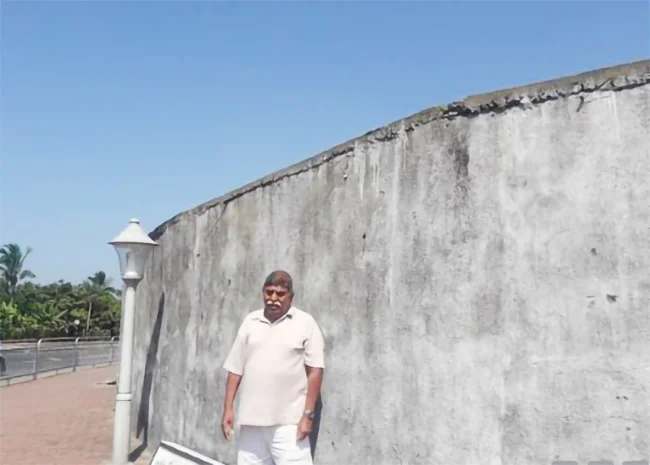
The author (5ft 6in tall) beside the controversial hazardous wall at Colombo International Airport, Ratmalana
Speaking of the Galle Road end, there is still that concrete (or cement brick) wall which is considered a hazard by all experienced pilots, yet the authorities continue to ignore demands for its removal. To clarify, a hazard, according to EASA (European Union Aviation Safety Agency), is “a condition or an object with the potential to cause or contribute to an aircraft incident or accident.”
The EASA goes on to state that one way of identifying a ‘hazard’ is accepting the opinion of experts with professional knowledge. Accordingly, 22 very experienced pilots with experience totalling 330,500 hours petitioned the then Director of Civil Aviation to remove the concrete wall at Colombo International Airport Ratmalana and replace it with a frangible fence. The letter is produced below.
2nd November ‘18
The Director General,
Civil Aviation Authority,
Minuwangoda Road,
Katunayake.
Dear Sir,
The Concrete Wall at the Galle Road End at the Ratmalana Airport
Attached herewith is a petition signed by 22 very experienced pilots, who feel strongly about the presence of the concrete wall at the Galle Road end of the Ratmalana Airport.
The petitioners have a total of 330,500 hours and consist of a cross-section of some of the most experienced pilots in the land.
It is hoped that you will heed their call and at least get the process going.
Thanking you in anticipation.
Yours truly,
Capt. G A Fernando
The author (5ft 6in tall) beside the controversial hazardous wall at Colombo International Airport, Ratmalana
But the airport authorities couldn’t care less. I believe that the main reason for this sad situation is that none of the present airport administrators are or have been aviators.
“If you think that Air Safety is expensive, try an accident” Jerome Lederer, President, Flight Safety Foundation, USA
gafplane@sltnet.lk
The Writer is Immediate past President, Aircraft Owners and Operators Association (AOAOA)
RCyAF/ SLAF, Air Ceylon, Air Lanka, Singapore Airlines (SIA), SriLankan Airlines
President, Colombo Flying Club.
President, UL Club (an Association of Former Air Lanka and SriLankan Airlines Employees)
Life Member of the Organisations of Professional Associations (OPA)
by Capt G A Fernando
MBA (UK)
-

 Business6 days ago
Business6 days agoAitken Spence Travels continues its leadership as the only Travelife-Certified DMC in Sri Lanka
-

 Latest News4 days ago
Latest News4 days agoNPP win Maharagama Urban Council
-

 Business6 days ago
Business6 days agoLinearSix and InsureMO® expand partnership
-

 Business4 days ago
Business4 days agoJohn Keells Properties and MullenLowe unveil “Minutes Away”
-

 Foreign News2 days ago
Foreign News2 days agoMexico sues Google over ‘Gulf of America’ name change
-

 News13 hours ago
News13 hours agoDestined to be pope:Brother says Leo XIV always wanted to be a priest
-

 Business5 days ago
Business5 days agoNDB Bank partners with Bishop’s College to launch NDB Pixel awareness
-

 Sports5 days ago
Sports5 days agoDamsiluni, Buwindu win Under 14 tennis titles



